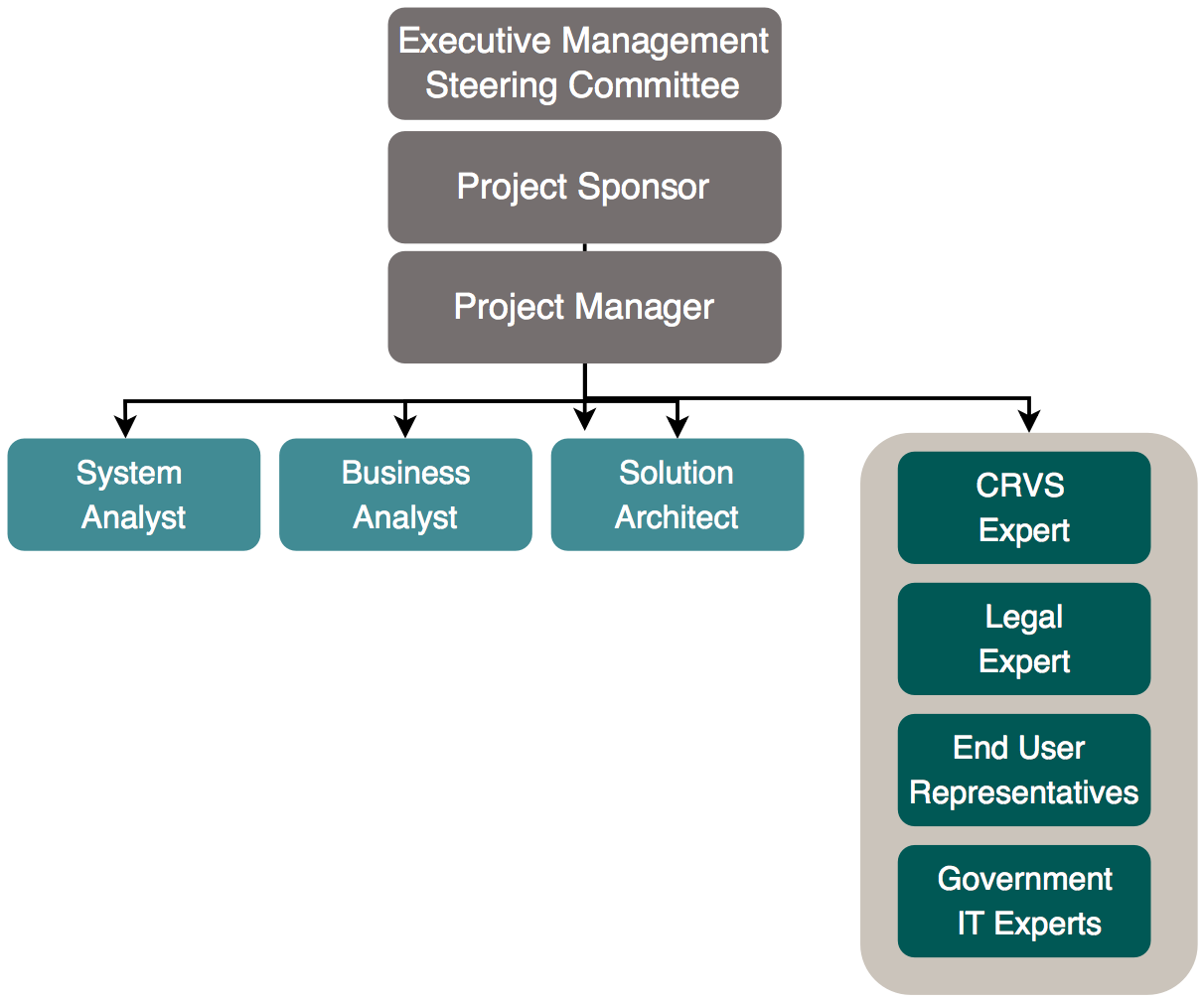Overview
In order to execute a successful CRVS Digitisation Project, it is critical to initiate the project in a structured manner, clearly defining expectations and standards to all relevant actors and stakeholders. To do this, a Project Initiation Document (PID) should be created, formally documenting the purpose, approach, standards and timelines of the analysis and design phase. The PID should be shared with all relevant parties so that the scope of work and their roles and responsibilities are acknowledged and accepted before formal work begins. In subsequent activities, this advanced project planning will help guide project decision-making and management and will be updated to reflect the change in focus of activities at the beginning of the Implementation Phase.
Steps:
For all of the steps below, complete the related section in the Project Initiation Document (PID) Template.
1
Document the Project Charter, ensuring that all of the questions below are answered:
- What mandate exists that requires you to digitise your CRVS processes; who granted this mandate?
- How is CRVS digitisation being funded?
- What are the objectives of developing a digitised CRVS system?
- What is the scope of the Analysis & Design phase activities?
2
Establish a Project Management structure and team, identifying required resources for the analysis and design phase of the digitisation activities (sample roles shown below):
- What skills and resources are required to complete each activity in the Analysis and Design phase?
- What Project Management functions are needed to effectively manage the project?
- What reporting requirements are required, to whom, and at what frequency?

Typical Project Organisation
3
Establish a governance structure for CRVS Digitisation activities, considering:
- What stakeholders need to be involved in key decision-making activities?
- What decision-making bodies are required? How will decisions be made? In what forum will these decisions be made?
- What reporting requirements are required, to whom, and at what frequency?
- Who is the project sponsor/champion e.g. a senior stakeholder who can align interests, resolve potential conflicts, and champion the project at a senior level?
4
Develop a workplan of activities for all Analysis and Design phase activities. Ensure that ample time is given to complete each activity.
5
Identify appropriate tools, repositories and processes to be used throughout the project lifecycle.
- What software will you use to document technical architecture diagrams, processes, and other documents?
- Where will these tools be stored?
- What training is required to ensure that these tools are used correctly?
6
Review the proposed architecture principles in the Project Initiation Document (PID) Template and edit/update as appropriate for the organisation, consider:
- What business rules/principles exist that can be used as inputs into the architecture principles?
- What IT standards should exist that will guide all CRVS digitisation work?
7
Obtain approval for the PID with relevant stakeholders as identified in the RACI matrix.
- On obtaining approval, share PID with all project actors and stakeholders.






